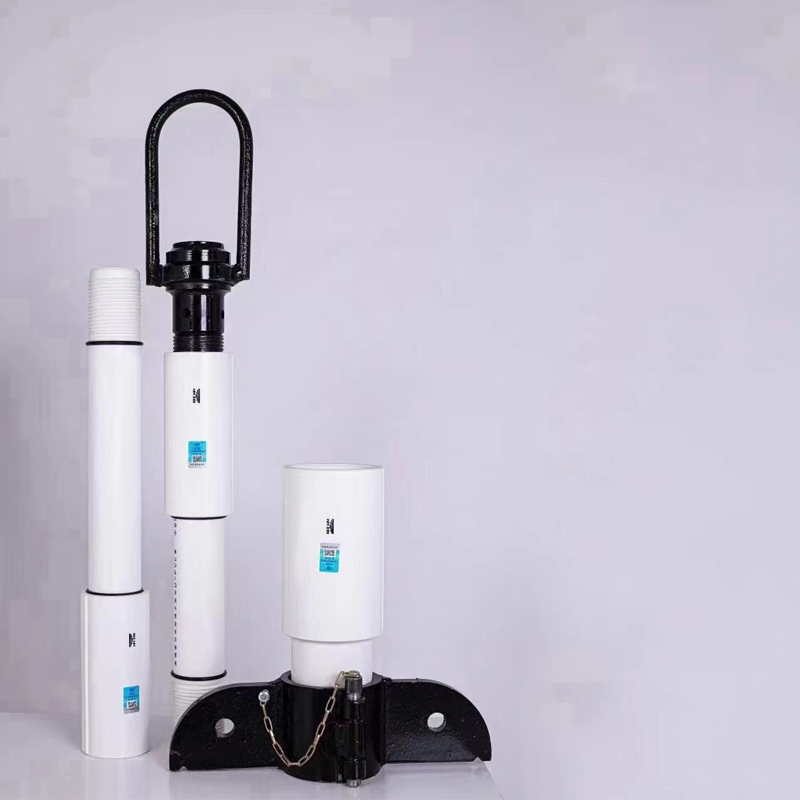Nov . 08, 2024 10:27 Back to list
HDPE Pipe Production for Efficient Sewer Line Solutions in Manufacturing Facilities
High-Density Polyethylene (HDPE) Pipes for Sewer Lines A Comprehensive Overview
In the modern infrastructure landscape, the materials we choose for sewer lines can significantly influence the efficiency, durability, and environmental impact of sewage systems. Among the various materials available, High-Density Polyethylene (HDPE) pipes have emerged as a popular choice for sewer lines due to their unique properties and advantages. This article explores the use of HDPE pipes in sewer line applications, focusing on their manufacturing process, benefits, installation methods, and environmental considerations.
What are HDPE Pipes?
HDPE pipes are made from high-density polyethylene, a thermoplastic polymer known for its high strength-to-density ratio. This material is produced through the polymerization of ethylene, which results in a robust, flexible, and lightweight piping solution. HDPE pipes are commonly used in various applications, including water supply, gas distribution, and, notably, sewage systems.
Manufacturing Process of HDPE Pipes
The production of HDPE pipes typically involves the extrusion process. In this method, plastic pellets are heated until they become molten, then forced through a die to form hollow tubes. The process allows for precise control over the pipe's dimensions and wall thickness, ensuring consistency in quality. Once the pipes are shaped, they are cooled and cut to the desired lengths. Additionally, HDPE pipes can be manufactured with different fittings and joints, enhancing their adaptability for various sewer line configurations.
Advantages of HDPE Pipes in Sewer Lines
1. Durability HDPE pipes exhibit exceptional resistance to environmental stressors, including chemicals, corrosion, and UV radiation. This durability extends the lifespan of sewer systems, reducing the need for frequent repairs or replacements.
2. Flexibility Unlike traditional materials such as concrete or clay, HDPE pipes are highly flexible. This flexibility allows them to bend without breaking, making them ideal for installation in areas with shifting soils or extreme temperature variations.
3. Hydraulic Efficiency The smooth inner surface of HDPE pipes minimizes friction loss, improving the hydraulic efficiency of sewer lines. This characteristic can lead to reduced pumping costs and lower energy consumption.
hdpe pipe for sewer line factory

4. Lightweight HDPE pipes are significantly lighter than their concrete or steel counterparts, making them easier to transport and handle during installation. This lightweight nature often results in lower labor costs and faster installation times.
5. Leak Prevention The fusion welding technique used to join HDPE pipes creates a seamless connection that significantly reduces the risk of leaks. This characteristic is crucial for sewer lines, where leaks can lead to contamination of the surrounding environment.
6. Cost-Effectiveness While the initial cost of HDPE pipes may be higher than that of traditional materials, their longevity and reduced maintenance needs contribute to lower total lifecycle costs. Additionally, the quick installation process can result in substantial labor savings.
Installation Methods
Installing HDPE pipes for sewer lines involves trenching, boring, or directional drilling techniques. Trenching is the most common method, where a trench is dug to lay the pipes at the required depth. In situations where minimal surface disruption is necessary, methods such as horizontal directional drilling allow for the installation of pipes without extensive excavation. Regardless of the method used, proper installation is critical to ensure the longevity and performance of the sewer system.
Environmental Considerations
One of the most significant advantages of HDPE pipes is their environmentally friendly nature. The production of HDPE is energy-efficient, and the material is fully recyclable. When HDPE pipes reach the end of their useful life, they can be reprocessed to produce new pipes or other plastic products, reducing waste in landfills. Furthermore, the leak-free properties of HDPE pipes help prevent contamination of soil and groundwater, making them a sustainable choice for sewer line applications.
Conclusion
High-Density Polyethylene pipes are becoming increasingly preferred for sewer line applications due to their many benefits, including durability, flexibility, and environmental sustainability. As infrastructure projects continue to evolve, utilizing innovative materials like HDPE will be essential for building efficient and resilient sewage systems. With its outstanding performance characteristics, HDPE not only meets the demands of modern sewer systems but also contributes positively to environmental preservation efforts. As cities grow and the need for effective waste management solutions becomes more pressing, the significance of HDPE pipes will undoubtedly continue to rise.
-
High-Quality PVC Borehole Pipes Durable & Versatile Pipe Solutions
NewsJul.08,2025
-
High-Quality PVC Perforated Pipes for Efficient Drainage Leading Manufacturers & Factories
NewsJul.08,2025
-
High-Quality PVC Borehole Pipes Durable Pipe Solutions by Leading Manufacturer
NewsJul.08,2025
-
High-Quality PVC Borehole Pipes Reliable PVC Pipe Manufacturer Solutions
NewsJul.07,2025
-
High-Quality UPVC Drain Pipes Durable HDPE & Drain Pipe Solutions
NewsJul.07,2025
-
High-Quality Conduit Pipes & HDPE Conduit Fittings Manufacturer Reliable Factory Supply
NewsJul.06,2025

